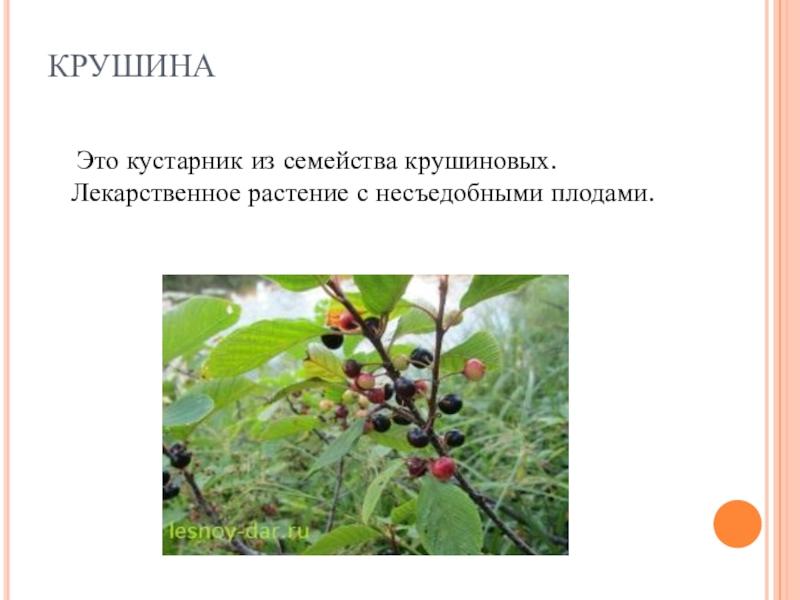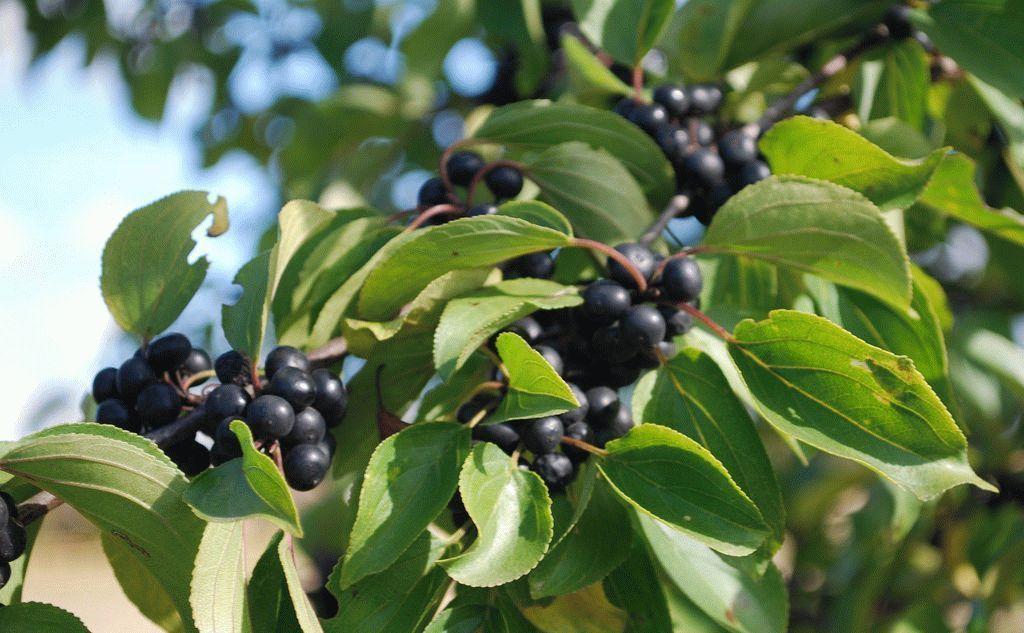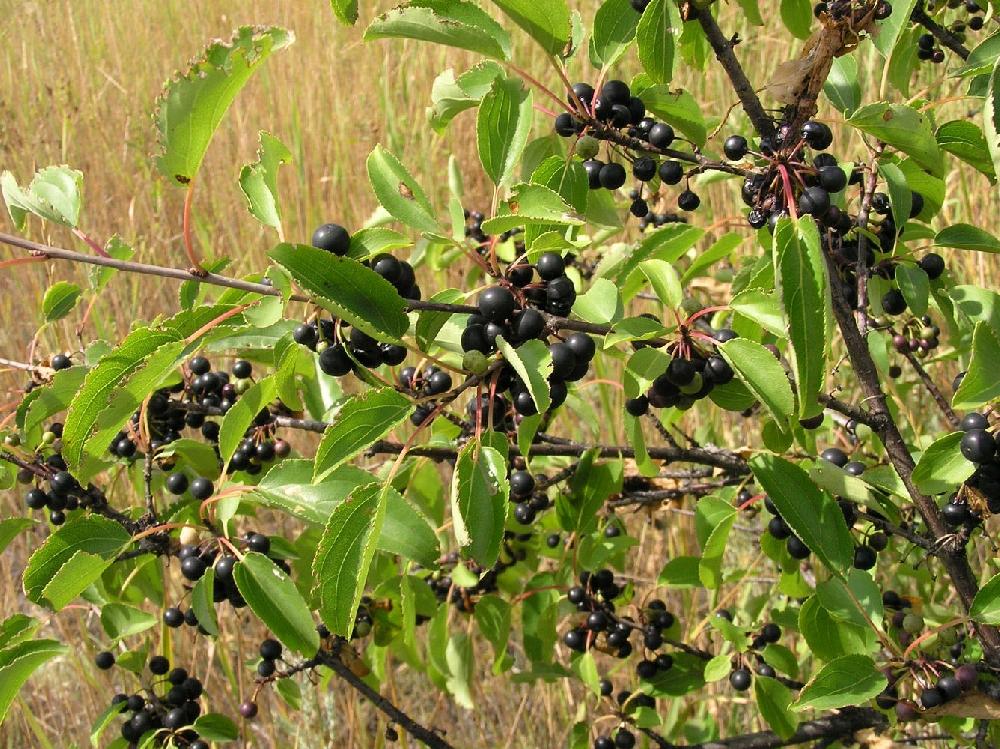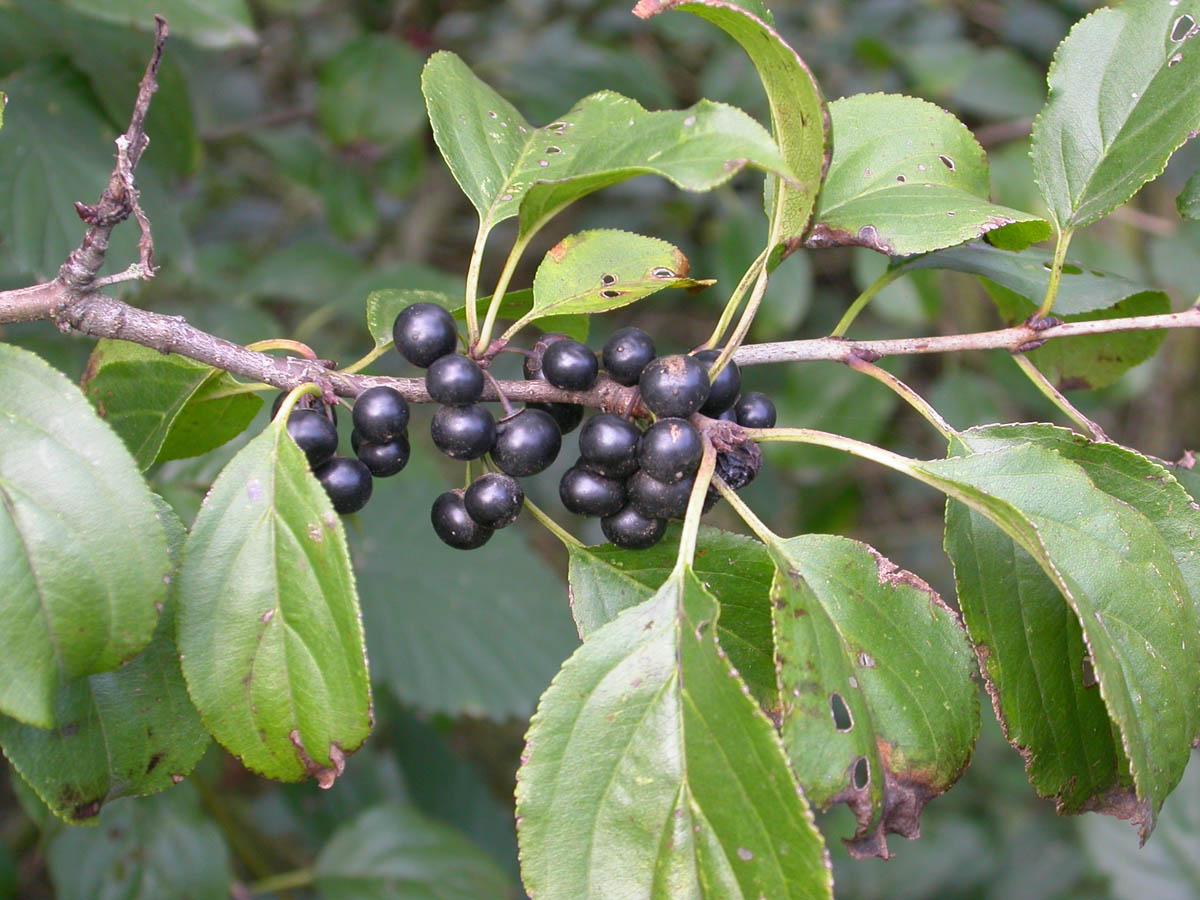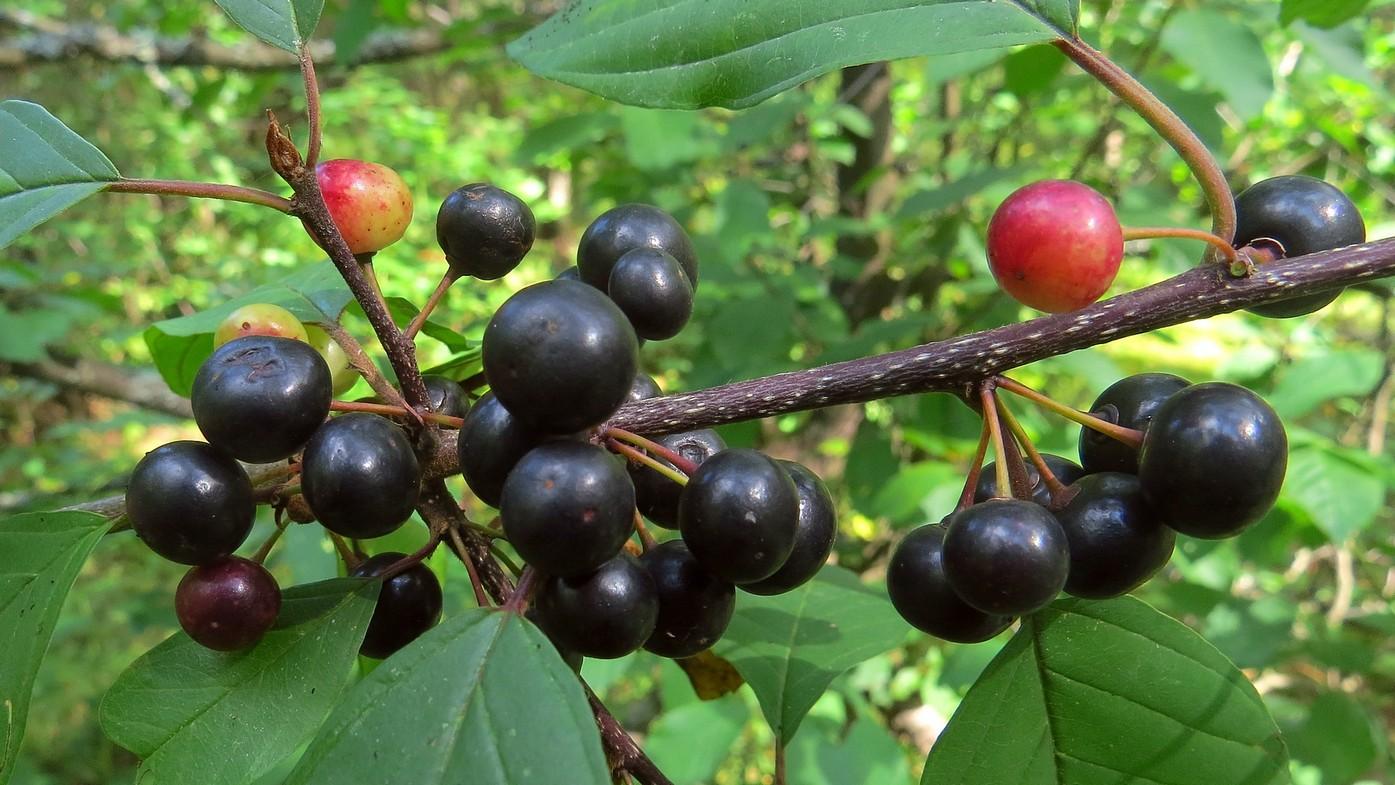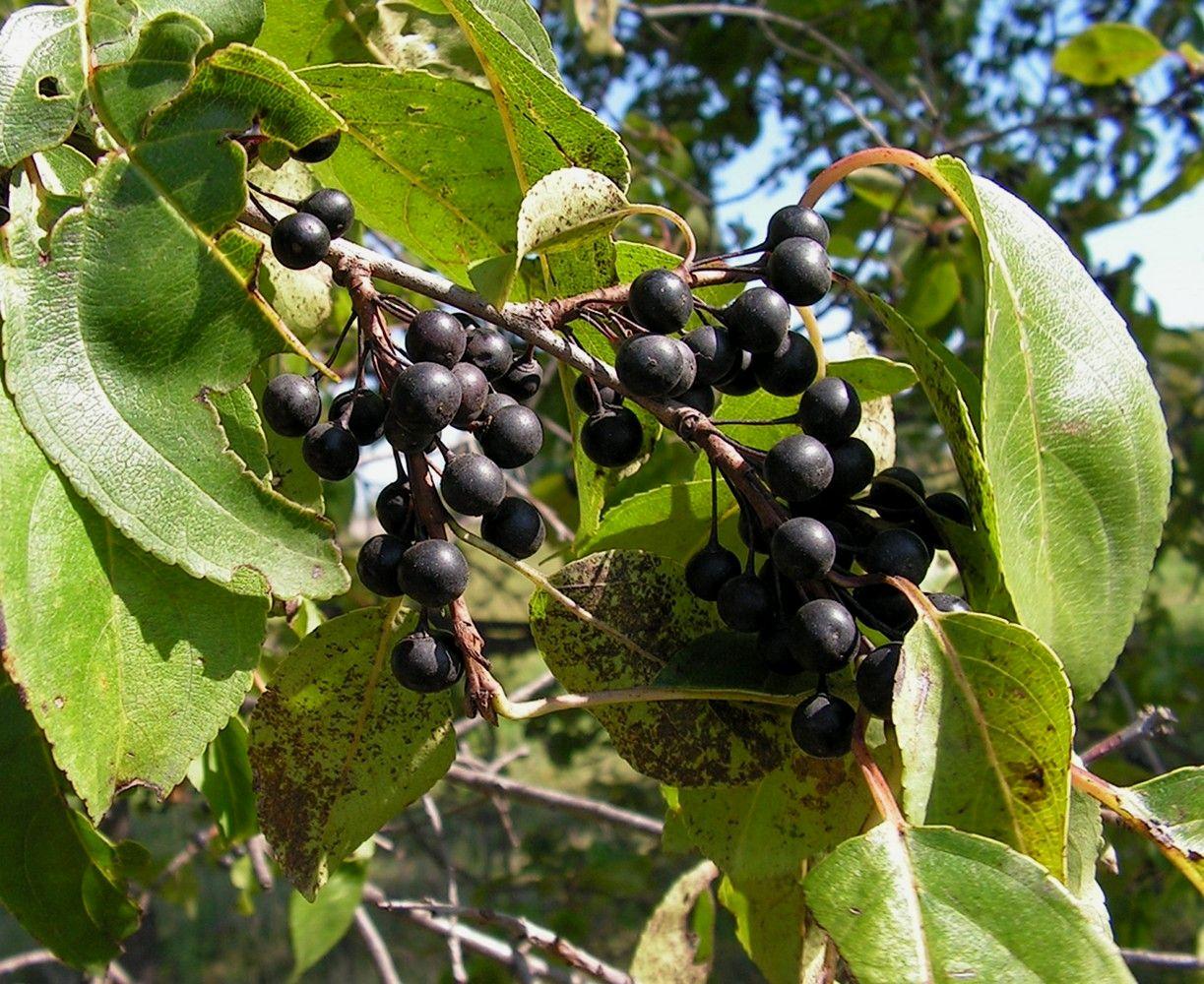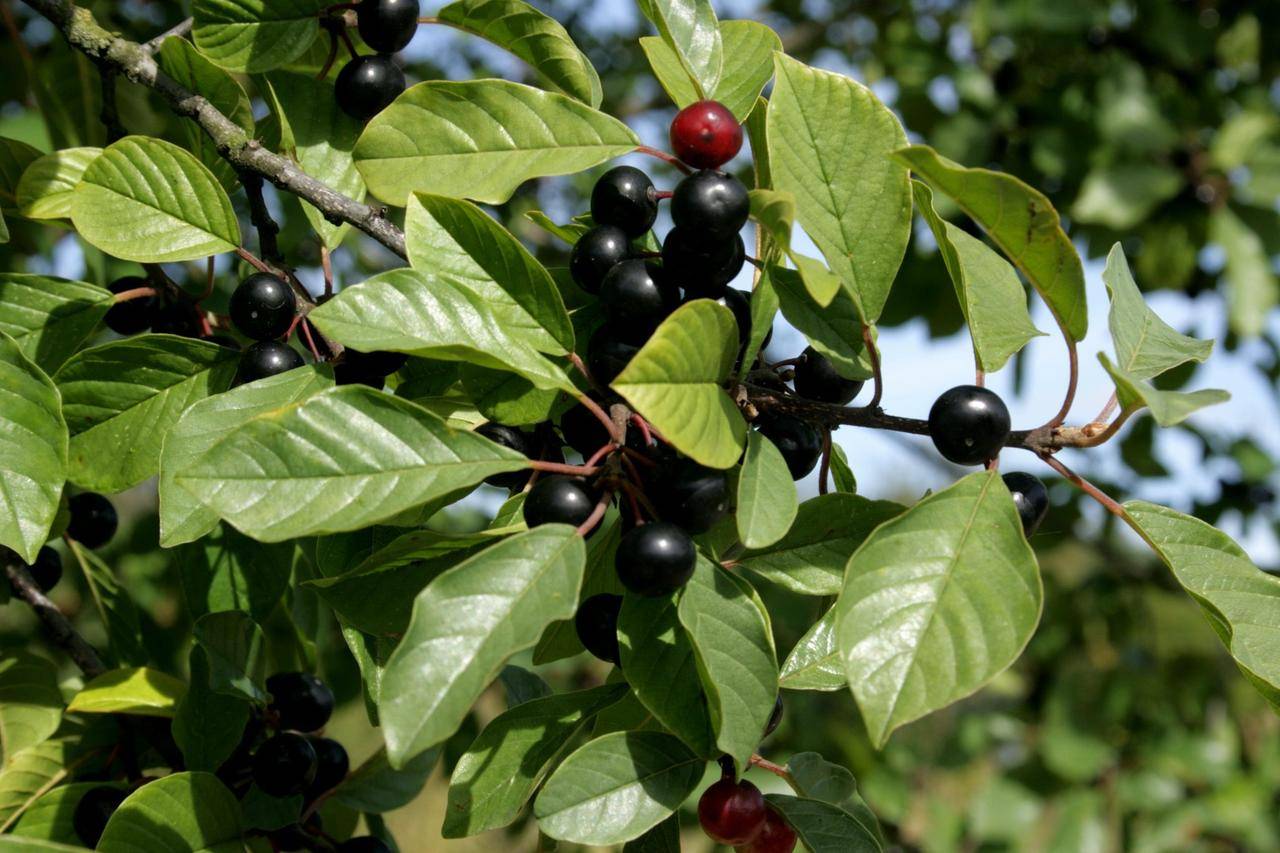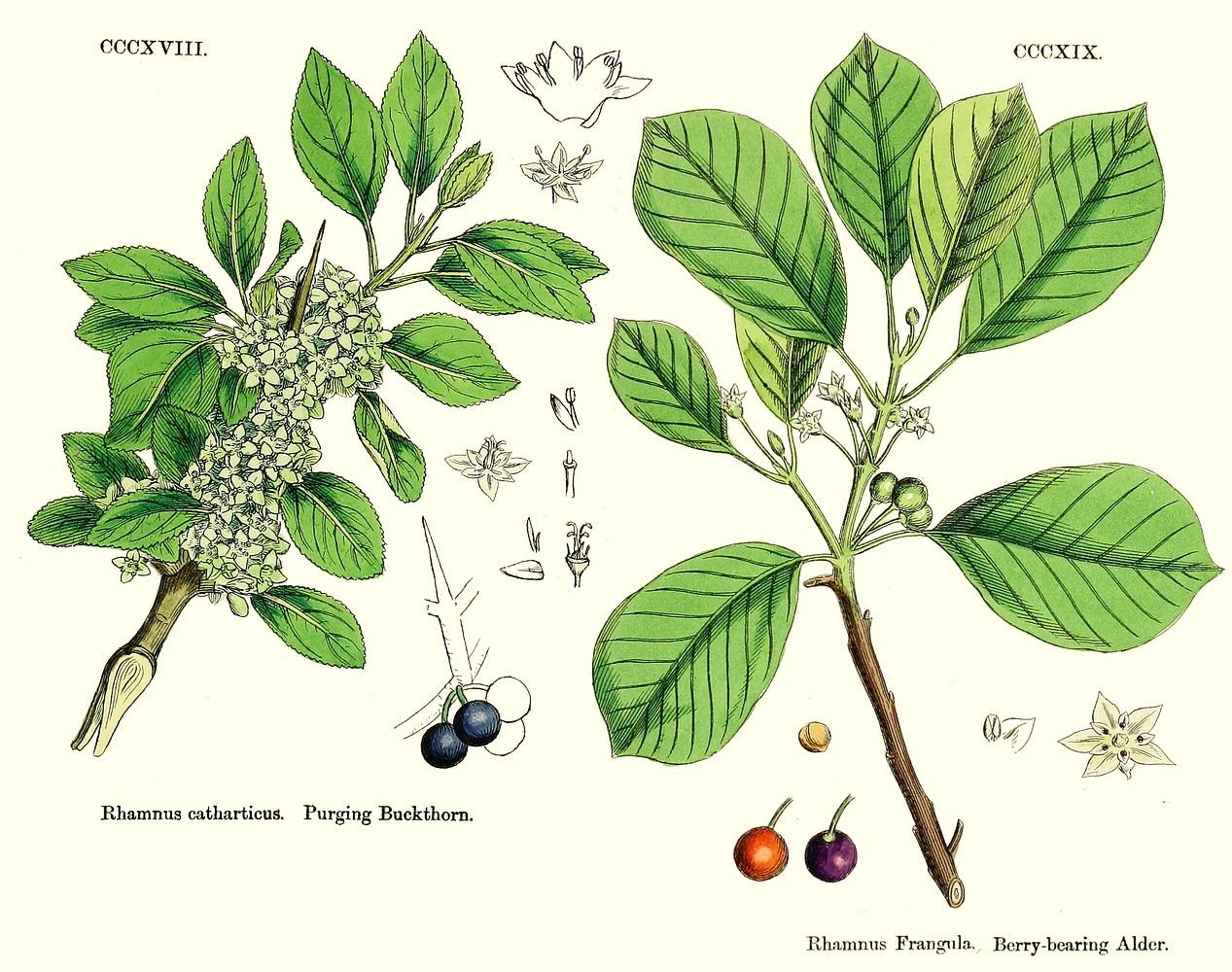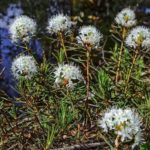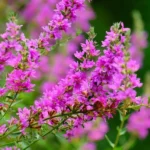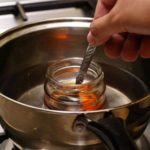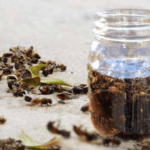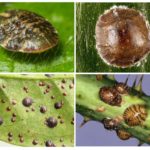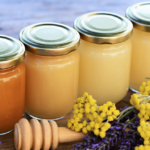Buckthorn is the name given to deciduous trees and shrubs that belong to the Buckthorn family. They are woody plants that have smooth branches and glossy oval-shaped leaves. Flowering occurs in May-June. This culture is characterized by a high content of useful components. Its medicinal properties are associated with this. The plant is used in medicine, cosmetology and other fields.
Botanical description
Buckthorn is a deciduous bush up to 7 meters high. Sometimes the plant looks like a tree. This species belongs to the Krushinaceae family and has 55 types. They are predominantly found on the American continent.
There are also evergreens with thorns. The alder type really does look like a tree. It is characterized by large gray-brown branches with light spots. In young plants, the bark is reddish and shiny.
The shrub has bare buds without closing scales and entire leaves of an elliptical shape, which are distinguished by an alternate arrangement. The plant begins flowering in May. During this period, yellow-green flowers appear on it, which are collected in brushes peeking out from the leaf axils.
A distinctive feature of buckthorn is its fruit. They are blue-black spherical berries. Their diameter is up to 10 millimeters. The berries ripen in August.
Chemicals in the plant
All above-ground plant fragments include anthracene derivatives in the form of glycosides. The bark, foliage, fruits and buds of buckthorn contain anthracene derivatives - anthraglycosides. The maximum content of such compounds was found in the bark - up to 8%. In addition, it contains aglycones, resins, alkaloids, flavonoids, and triterpenes.
In addition, buckthorn bark includes anthranol, coumarins, pectin, and essential oils. It also contains saponins, naphthaquinones, and tannins. In addition, this part of the plant contains many vitamins.
Wood includes tannins, sucrose, and alkaloids. It contains malic acid, essential oils, alizarin. The leaves contain many alkaloids, vitamin C, and franganine. The fruits and seeds contain large amounts of palmidine and chrysophanol.
Medicinal properties
The key pharmacological characteristics of the plant are due to the high content of anthraglycosides. Together with other ingredients, they have the following types of effects on the body:
- help achieve a laxative effect;
- cope with bacterial infection;
- destroy microbes;
- cope with viruses;
- heal wounds;
- cope with fungi;
- provide a sedative effect;
- remove salts;
- cleanse internal organs - intestines and liver;
- cope with worms;
- improve metabolic processes.
Dry powder from crushed bark is recommended to be taken for helminthiasis, severe diarrhea, and heavy bleeding during menstruation. The fruits of the crop can also be used as an anthelmintic, but it is important to consider that they have toxic properties. This medication should only be taken under the supervision of a physician.
Application
Buckthorn is a popular crop that is used in a variety of areas of life.
Household and life
The berries and bark of the plant are used to dye woolen fabrics. These fragments are also used for tanning leather. Thanks to the use of these substances, it is possible to achieve a pronounced brown or olive color. Buckthorn has flexible branches that can be used for weaving baskets and other products.
Cosmetology
In cosmetology, buckthorn is used in different ways. A decoction of this plant can be taken orally to cleanse the intestines and the body as a whole. It can also be used externally for washing.An infusion of the bark of the culture has pronounced anti-inflammatory properties. Thanks to this, it has a drying effect on acne and ensures their rapid healing. Due to the vitamin C content in the plant, it is possible to improve complexion.
Making an infusion for washing is not difficult. To do this, it is recommended to take 2 tablespoons of crushed buckthorn bark and pour a glass of boiled water. The composition must be infused for 30 minutes, after which it must be strained and boiled water added to obtain the original volume. You can wipe your face with the resulting product by moistening a cotton pad in it. It is also permissible to freeze the infusion and use it in the form of ice cubes in the morning.
Medicine
Medicines based on buckthorn bark are suitable for external and internal use. It is worth using decoctions and infusions of the plant orally. Such drugs are used as a laxative. They also provoke vomiting.
The laxative properties of buckthorn bark decoction can be used by overweight people. However, the composition should not be used too often, since it has a large number of side effects. Before using the composition, you must consult a doctor.
Decoctions and infusions of buckthorn bark are also suitable for external use. They have pronounced antibacterial properties. Such products can be used for infection with streptococci, furunculosis, and dermatological pathologies.
Indications for use
Decoctions and infusions of buckthorn bark and fruits are used in the following cases:
- chronic constipation associated with intestinal atony;
- haemorrhoids;
- cracks in the anus;
- helminths;
- heavy bleeding during menstruation.
Buckthorn berries have pronounced diuretic properties. They can be used to treat abdominal dropsy and edema associated with the development of chronic heart failure.
Contraindications
Long-term use of buckthorn provokes addiction. In this case, you have to increase the dosage or use other laxatives. With prolonged use of an increased amount of the composition, there is a risk of increasing blood volume in the pelvic organs. This is dangerous in the following conditions:
- pregnancy – the risk of miscarriage increases;
- gynecological pathologies;
- tendency to uterine bleeding.
Buckthorn-based products are prohibited from being used in the following cases:
- Crohn's disease;
- malignant tumor formations in the digestive organs;
- bleeding from the uterus;
- lactation.
To treat constipation, buckthorn-based remedies can be used for a maximum of 8-10 days. In this case, you cannot use other laxatives. This can cause intestinal irritation, impair peristalsis and significantly increase constipation.
Recipes
For treatment, you can use a variety of buckthorn-based products. To do this, you can use bark decoction, dry and liquid extracts. Such formulations are often used as part of complex therapy.
Teas are made from buckthorn bark for constipation, hemorrhoids, and pain in the stomach. The roots of the plant are used to prepare diuretics and choleretic preparations. Buckthorn fruits have anthelmintic properties and are beneficial for liver diseases. Syrup made from buckthorn bark is used in pediatrics.
Bark decoction
To make a medicinal decoction, you need to take the following:
- 1 tablespoon of buckthorn bark;
- 250 milliliters of water.
It is recommended to place the mixture in a steam bath and heat for 20 minutes. After this, you need to add a little boiled water to get the original volume.
It is recommended to take half a glass 2 times a day. It is best to do this at the same time - for example, at 8.00 and at 20.00. As a rule, the medicine begins to act only after 8 hours. However, sometimes the effect can occur earlier.
This composition is prescribed for fever and liver failure. External use is possible when scabies appears in children. The composition is also often prescribed by veterinarians for the treatment of pets.
All medicinal formulations must be prepared from dried raw materials. If it is necessary to use fresh plant fragments, they must be heated at a temperature of +100 degrees. This must be done within 1 hour.
Alcohol tincture
To make such a composition, it is recommended to take the following:
- 1 part crushed bark;
- 5 parts edible alcohol 30%.
The composition must be infused for 10 days. From time to time the components need to be mixed. The resulting composition is recommended for use in various dermatological pathologies - pyoderma, streptoderma, furunculosis and other skin lesions that are accompanied by infection with staphylococci and E. coli.
In complex therapy, the bark is recommended to be prescribed for ulcerative pathologies of the digestive system, which are accompanied by high acidity, inflammatory lesions of the liver and gall bladder.
Cocktail with prunes and rosehip syrup
This remedy has a pronounced cleansing effect on the intestines. To do this, it is recommended to take the following components:
- 1 sachet of buckthorn bark;
- 400 grams of prunes with pits;
- 1 bottle of Holosas.
First you need to boil the dried fruits in 1.5 liters of water for 40 minutes. After this, you need to remove the prunes and add 15 grams of buckthorn bark to the mixture. The broth must be brought to a boil and left for 5 hours in a warm place. In this case, you need to wrap him in a warm towel.
After straining, you need to add water to the composition to get 1.2 liters. Then you need to pour Holosas into the product and mix well. It is recommended to keep the resulting laxative composition in the refrigerator. You can drink it at night - 2 hours after dinner. Single dose – 100 milliliters. It is best to use the product warm. The course of treatment lasts 12 days. If required, therapy can be repeated after 21 days.
Recommendations for preparation
Buckthorn bark, which is harvested in the spring, is usually used as a medicinal raw material. It is important to collect raw materials in the period between the swelling of the buds and the beginning of flowering of the crop. When harvesting the plant, you should use an ax or hacksaw. It is recommended to leave small stumps - up to 15 centimeters. This is required for regrowth.
Brittle buckthorn is often confused with other shrubs and trees. It can be mistaken for laxative zoster or bird cherry. A distinctive feature of the culture in question is that when the outer cork layer is scraped off, a crimson-red hue can be seen on the bark. Other shrubs and trees have a green or brown layer there.
To remove the bark, you need to make circular cuts.They are connected to longitudinal ones. This technology helps to remove the bark in the form of neat groove-shaped pieces. At the same time, you cannot plan off the bark with a knife, since its fragments will turn out to be too narrow and will contain wood residues. If fruticose lichens are present on the bark of the crop, they must be removed.
The next time it is possible to harvest raw materials in the same area only after 10 years. The bark is dried in the fresh air. This must be done under awnings, laid out in a loose layer. In this case, the raw material must be mixed several times during drying.
At night, bark that is dried outside must be brought indoors or covered with a tarpaulin. When the raw material begins to break with a bang when bent, we can say that it is dried. However, you cannot use buckthorn bark right away, since it contains many toxic substances. These components can cause severe nausea and vomiting.
Therefore, before using for medicinal purposes, the bark must be kept for at least 1 year. After the specified time, the substance can be used as a laxative. If you need to use the medicinal composition immediately, and only fresh bark is available, it can be heated in the oven at a temperature of +100 degrees. This must be done for at least 1 hour.
Under the influence of high temperatures, the toxic substances present in the bark will be destroyed. In this case, the components that have a laxative effect will remain. It is worth considering that properly prepared raw materials have a slight aroma and bitter taste. Its shelf life does not exceed 5 years.
Buckthorn is a useful plant that contains many valuable components.Thanks to this, it can be used for medicinal purposes. This substance has pronounced laxative properties and helps to cope with many other problems. To prevent buckthorn from harming the body, it is important to use it correctly, strictly observing the dosage. If this is not done, there is a risk of serious poisoning. The fact is that the plant contains toxic substances.

